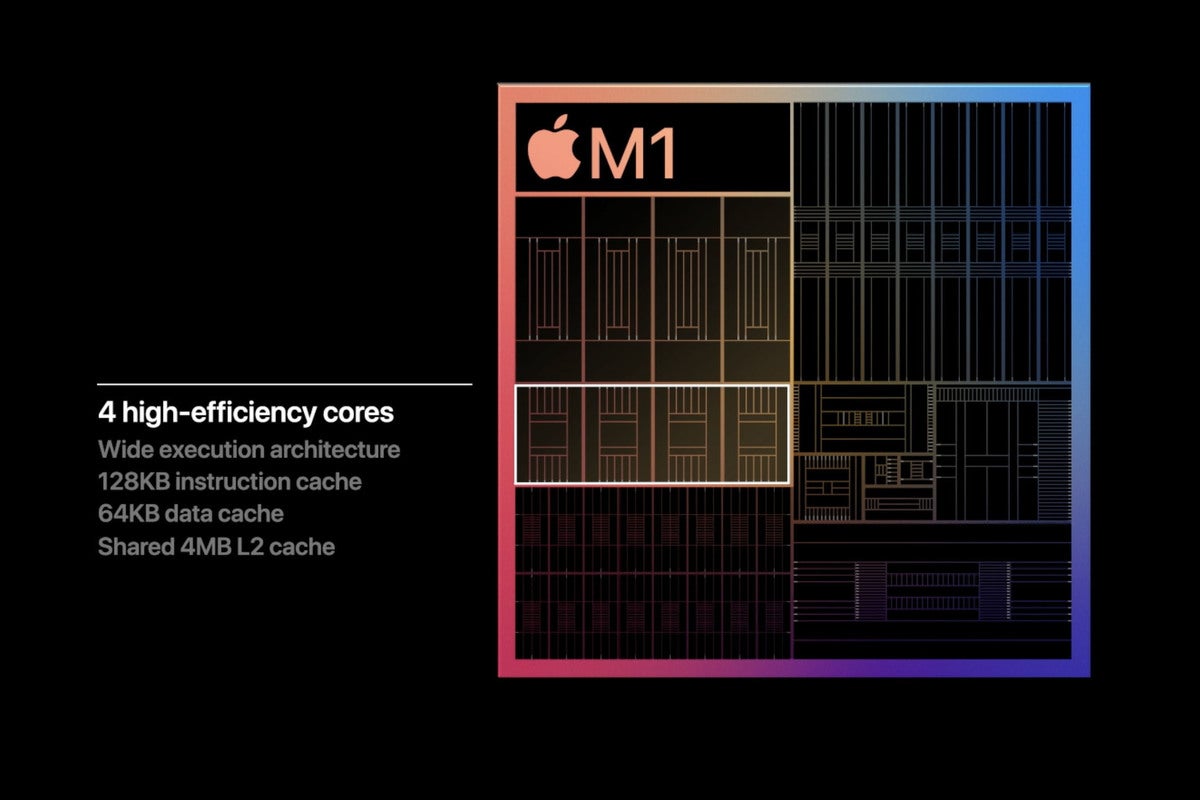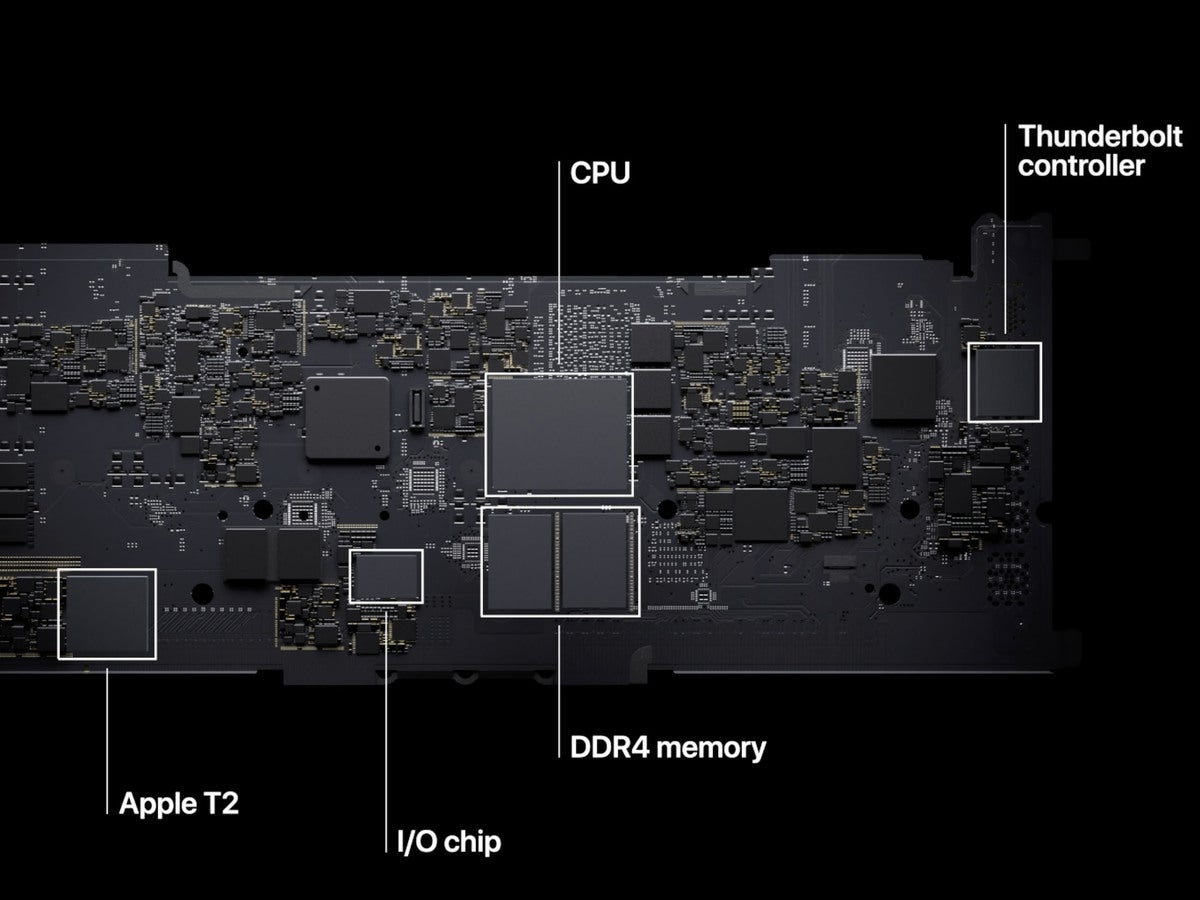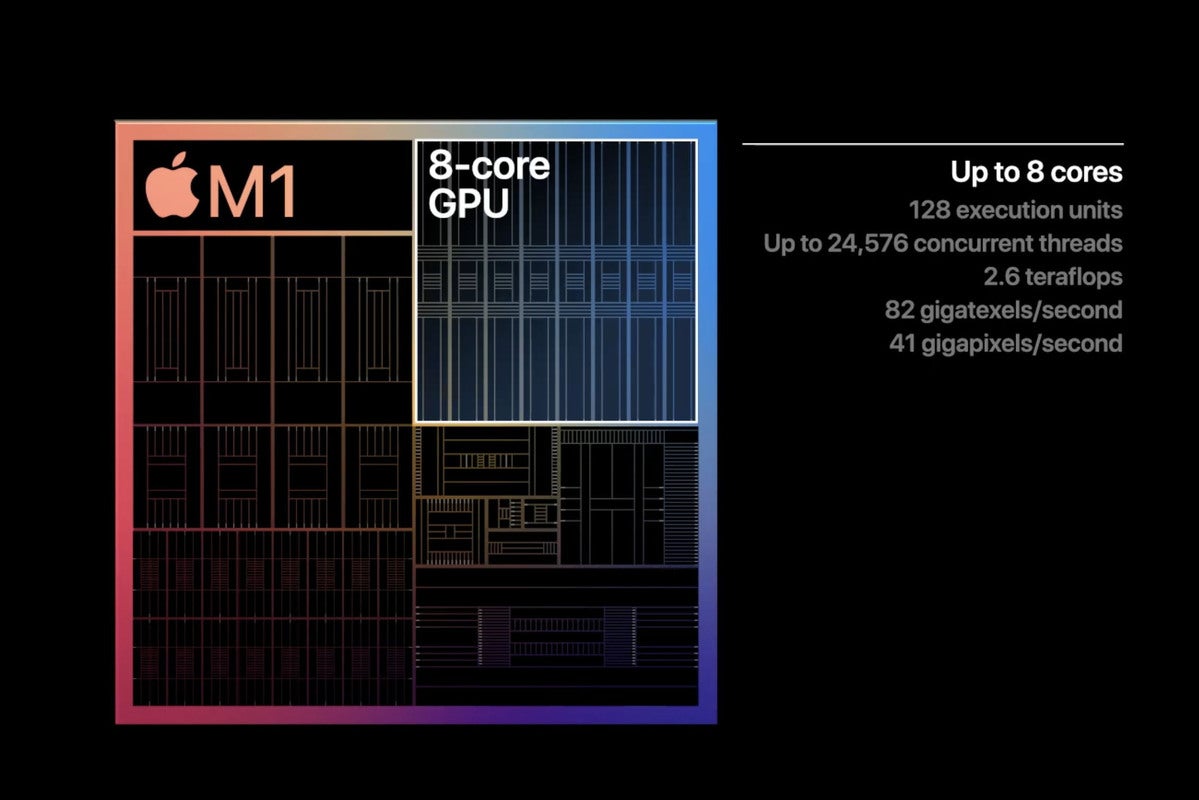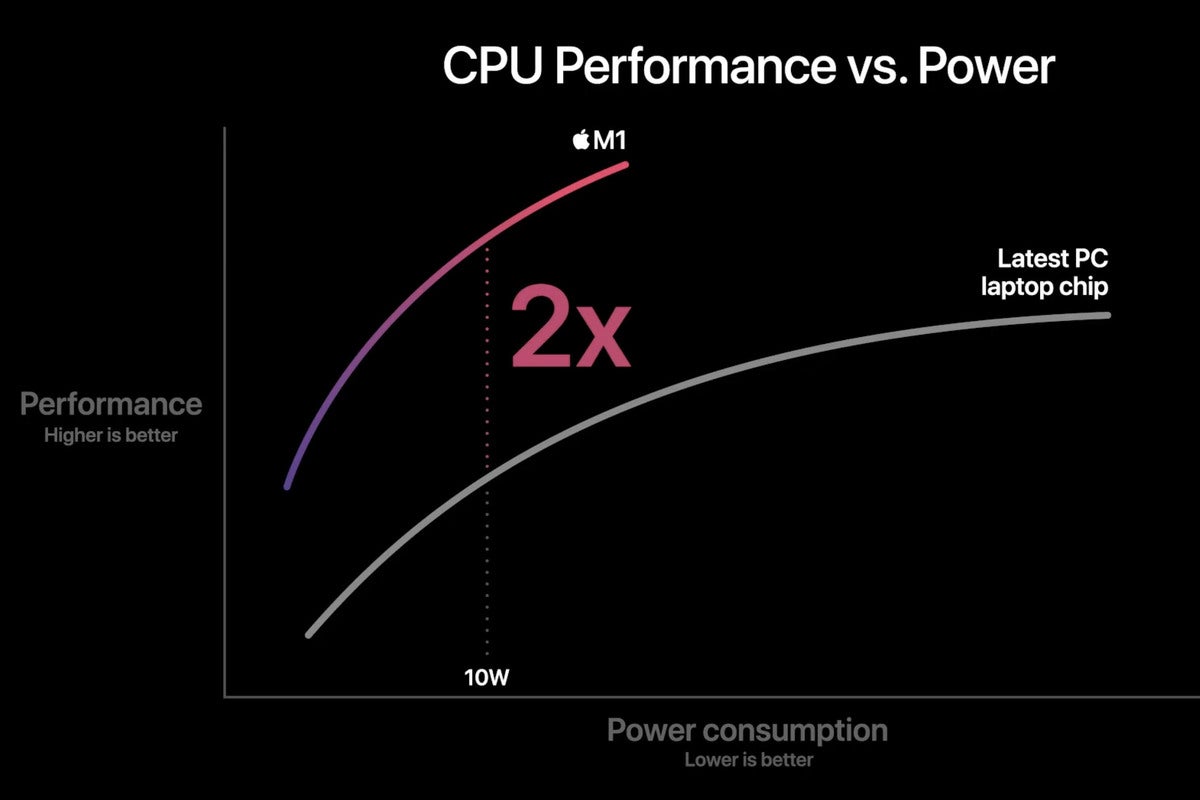Apple makes bold claims about its M1 chip for Macs
- 11 November, 2020 06:52

Apple has unveiled its first macs with Apple silicon, and they’re powered by an all new Mac-specific chip: the M1. It’s based on the same fundamental design of the A14 (found in the iPhone 12), but scaled up to laptop-grade performance levels with more cores, more memory, and higher thermal limits.
The result, Apple says, is a shocking increase in performance and power efficiency. Here’s what you need to know about the M1 system-on-chip.
Eight core CPU and GPU
Where the A14 has a six-core CPU—four high-efficiency cores and two high-performance cores—the M1 expands that by adding another pair of high-performance cores for a total of eight.
We’ve already seen how fast these cores are in A14 performance benchmarks, and with the higher thermal and power limits of a laptop they should have even more room to breathe.
 Apple
Apple
Apple doubled its high-performance CPU cores to four, and still has four high-efficiency cores, too.
Apple has also expanded the GPU from four cores in the A14 to eight in the M1. Apple says it’s the fastest integrated graphics in any laptop anywhere.
Apple’s not big on benchmarks, just grand claims like “up to two times faster than the latest laptop chip.” Apple says the MacBook Air with the M1 chip is faster than 98% of all PC laptops. Not just “thin and light” laptops or “laptops in its class,” but all PC laptops.
A complete system-on-chip
Macs used to use several separate chips for CPU/GPU, I/O, RAM, thunderbolt controller, and the T2 chip for security (and other functions). With the M1, all of those chips are combined into a single system-on-chip.
 Apple
Apple
Some of the separate chips now combined into the M1 system-on-chip.
That’s a double-edged sword. On the one hand, you can say goodbye to expandable memory and most other upgrade options. Perhaps future Apple-designed Mac chips will allow for standard memory DIMMs, but the M1 features a single chunk of memory that can’t be expanded (either 8GB or 16GB).
On the other hand, fewer chips means that the system logic board gets a lot smaller, making it possible to produce smaller products, cram in more battery, and more efficiently cool the system.
You also get the Neural Engine, with 16 cores (just as in the A14). That’s 11 teraflops of machine learning acceleration in a thin and light laptop, which is a huge leap forward for developers that write ML apps.
Better performance
Apple doesn’t promote its products with industry standard benchmarks—we’ll have to wait for independent reviews for that.
But it claims the M1 delivers twice as much CPU performance as the “latest laptop chip” (which is not specifically identified) in the MacBook Air’s 10-watt power envelope. It also delivers double the graphics performance at that power, according to Apple.
 Apple
Apple
The top-line specs for Apple’s GPU are quite impressive, for integrated graphics.
Apple’s claims are pretty extreme: The MacBook Air with the M1 chip delivers up to 3.5x the CPU performance and 5x the graphics performance of the last Air. Even in the bigger more powerful 13-inch MacBook Pro, Apple says it can deliver 2.8 times the CPU performance and 5x faster graphics. Even if those claims are way off the mark, we should be looking at a big speed improvement compared to prior Macs.
Apple’s specs for its GPU are impressive. At 2.6 teraflops and 41 gigapixels per second, it would easily outclass Intel’s Iris Plus G7 and may even compare favorably in some ways to laptops with Intel's new Xe discrete graphics solution. It’s more impressive on paper than even AMD’s excellent Vega graphics in its latest Renoir mobile APUs.
Of course, Apple will compete not just with thin-and-light laptops using Intel processors, but new laptop chips on the way from AMD, and thin-and-light Windows laptops that use discrete graphics.
Such incredible performance claims bear verification, and we're somewhat incredulous. Such massive leaps in performance almost always come with a mountain of caveats, and we encourage readers to wait for lots of independent verification first. Still, even if Apple's claims are off by double, we're looking at a shockingly competitive platform.
Power efficiency
This increase in performance and new capabilities come not at a cost in power, but with less power use.
Apple claims M1 delivers the same peak CPU performance using only a quarter of the power as the “latest laptop chips.” The company does not specifically identify that, only saying that the comparisons were made using the new 13-inch MacBook Pro against “latest‑generation high‑performance notebooks commercially available at the time of testing.”
 Apple
Apple
Apple claims to absolutely demolish conventional laptop chips in power efficiency and performance.
When it comes to graphics, the company claims the same peak performance is achievable with only one third the power. And for both CPU and GPU performance, Apple says its chips deliver double the performance of the latest laptop chips within a 10-watt power envelope.
We’ll have to wait for independent testing to verify those claims, but Apple seems confident enough in its power efficiency to remove the fan entirely from the new MacBook Air. And both the new M1-based MacBook Air and MacBook Pro deliver dramatically increased battery life—we’re talking hours more—using the same-sized batteries as the versions with Intel chips.





